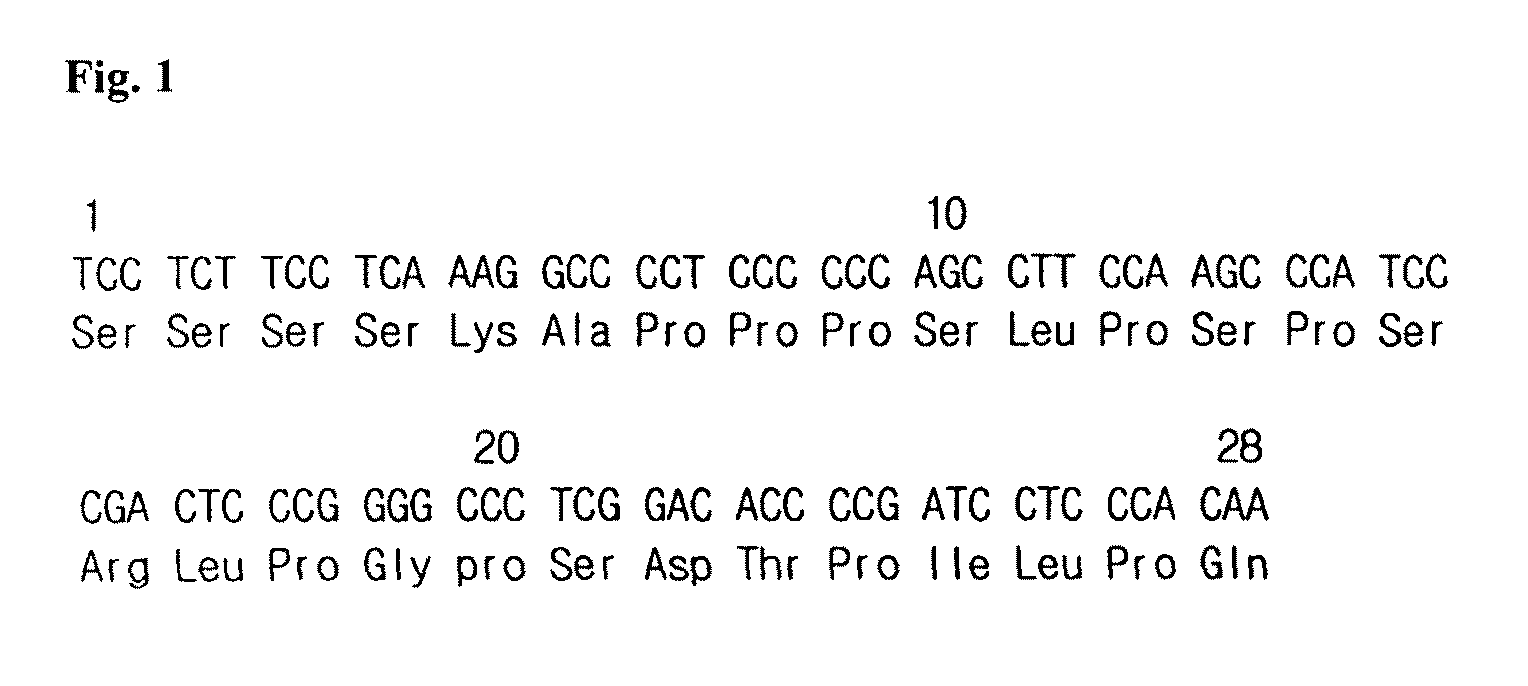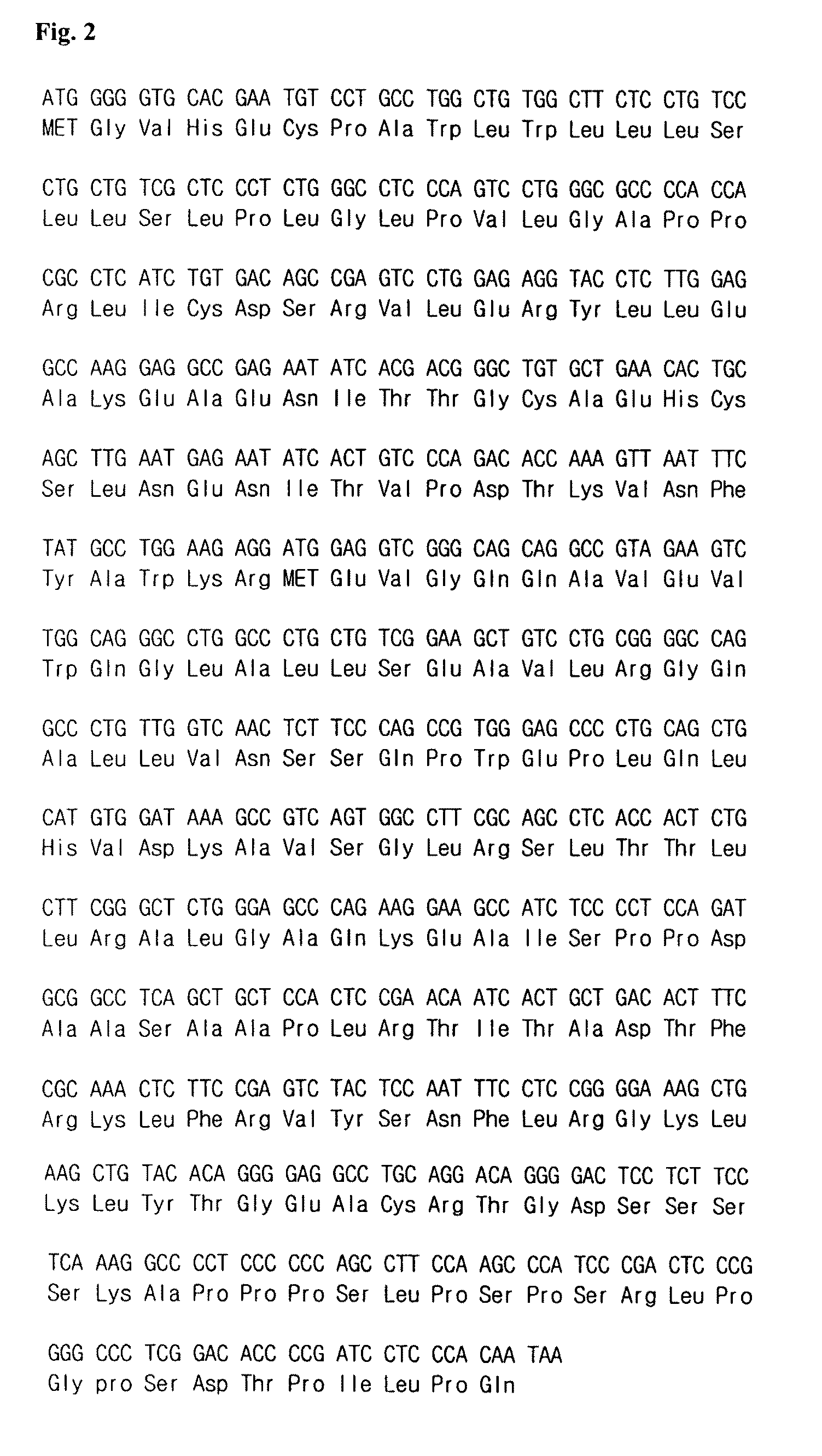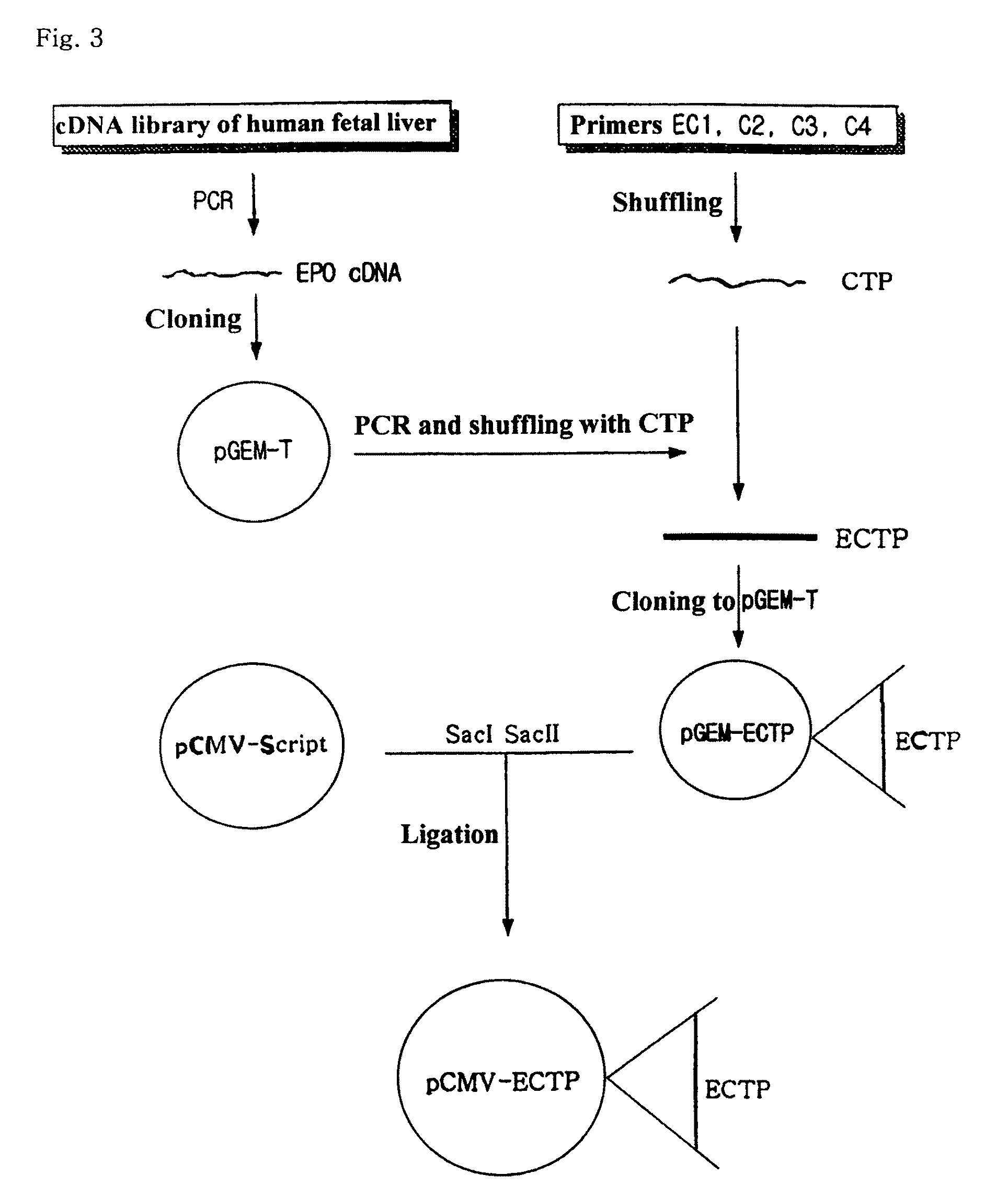Fusion protein having the enhanced in vivo activity of erythropoietin
a technology of erythropoietin and in vivo activity, which is applied in the field of fusion proteins, can solve the problems of high administration cost, human body, and inability to attach carbohydrate chains to proteins, and achieves the effects of low cost, short half-life and high cos
- Summary
- Abstract
- Description
- Claims
- Application Information
AI Technical Summary
Benefits of technology
Problems solved by technology
Method used
Image
Examples
example 1
Preparation and Cloning of Human EPO cDNA
[0054]EPO cDNA was obtained by performing the well-known RT-PCR technique (PreMix Kit™ of Bioneer) in the cDNA library of the human-derived fetal liver (Invitrogen) using previously prepared EP1 and EC2 primers that are complementary to both terminals of EPO cDNA. PCR was performed in 30 cycles under the condition of 55° C. for 35 seconds for annealing, 72° for 40 seconds, and 94° C. for 20 seconds to obtain EPO cDNA. The obtained EPO cDNA was cloned to pGEM-T (Promega), a cloning vector. That is, the PCR products were run on 1% agarose gel, and the separated EPO cDNA was ligated into pGEM-T. The recombined pGEM-T was then introduced into E. coli NM522 to obtain transformed E. coli. Plasmid DNAs were purified from the white colonies that are cultivated for one night in LB-ampicilline solid medium containing X-gal / IPTG, and were treated with restriction enzymes Sac I and Sac II to screen the colonies containing EPO cDNA. The obtained plasmid i...
example 2
Construction of an Expression Vector pCMV-ECTP
[0057]pCMV-Script (Stratagene) was used as an expression vector. pCMV-Script and pGEMT-ECTP were treated with restriction enzymes Sac I and Sac II, respectively, and the linearized pCMV-Script and ECTP genes were obtained by the Qiagen gel extraction Kit on agarose gel. After ligation, the ligate was introduced into E. coli NM522. Plasmids were isolated from the colonies that were cultivated for one night in LB-kanamycine solid medium, and were treated with restriction enzymes Sac I and Sac II. The colonies having ECTP gene were then screened by 1% agarose gel electrophoresis. This plasmid is designated as pCMV-ECTP (refer to FIG. 3).
example 3
Construction of an Expression Vector pcDNA3.1-ECTP
[0058]pcDNA3.1 (Invitrogen) was used as an expression vector. PCR was performed using the pGEMP-ECTP as a template, EP11 and EP22 as primers, and high fidelity Tag system (BM), to obtain 630 bps of the intended fusion gene. The terminals of the ECTP gene have restriction sites for HindIII and BamHI, respectively. pcDNA3.1 and the obtained ECTP gene were treated with restriction enzymes HindIII and BamHI, respectively. The linearized pCMV-Script and ECTP genes were obtained by the Qiagen gel extraction Kit on agarose gel. After ligation, the ligate was introduced into E. coli NM522. Plasmids were isolated from the colonies that are cultivated for one night in LB-ampicillin solid medium, and were treated with restriction enzymes HindIII and BamHI. The colonies containing ECTP gene were then screened by 1% agarose gel electrophoresis. This plasmid is designated as pcDNA3.1-ECTP (Refer to FIG. 4).
PUM
| Property | Measurement | Unit |
|---|---|---|
| pH | aaaaa | aaaaa |
| pH | aaaaa | aaaaa |
| pH | aaaaa | aaaaa |
Abstract
Description
Claims
Application Information
 Login to View More
Login to View More - R&D
- Intellectual Property
- Life Sciences
- Materials
- Tech Scout
- Unparalleled Data Quality
- Higher Quality Content
- 60% Fewer Hallucinations
Browse by: Latest US Patents, China's latest patents, Technical Efficacy Thesaurus, Application Domain, Technology Topic, Popular Technical Reports.
© 2025 PatSnap. All rights reserved.Legal|Privacy policy|Modern Slavery Act Transparency Statement|Sitemap|About US| Contact US: help@patsnap.com



